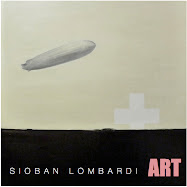Last weekend on my trip to the Metropolitan Museum of Art, I had the opportunity to see what may be a perfect painting, Johannes Vermeer’s The Milkmaid. Only thirty-four paintings are “officially” attributed to the artist, so I make it point to see one if I am in a city so fortunate to own one. The Met has five of its own works by Vermeer. Of course it does. They own a possible sixth but its provenance remains in question. The Milkmaid is on brief loan from the Rijksmuseumin, its home in the Netherlands.
What is it about this painting (and others by Vermeer) that demands respect from historians and artists of every discipline? The first aspect perceived in a Vermeer is the quality of light. Many attribute this to his possible use of the camera obscura which caused a halo effect when drawing the projected image onto the support. As a painter, I know how hard it is to effectively translate a drawing into a painting, and although the device may have assisted Vermeer in the composition, it would not have produced the optical effects his paint creates. That comes in the application.
Vermeer’s paint is luminous, and the light is projected from within the layers of pigment, not the surface. Of course, the pigments, particularly the lead-based ones used, assist in producing the layers of paint that independently project their characteristics. Yes, lead-based white, or Flake White, is still the best white and with care can be used safely. Vermeer worked with a very limited palette. Unlike the commercially produced paints available today, the chemical composition and reactivity of his paints varied color to color. Thus, it is believed, each area had to be applied and then allowed to dry before the application of a different color. Thus the blue in the skirt of the milkmaid maintains a mind-boggling brilliance.
It is obvious that every inch of the painting was given equal importance. So much so that even a dent in the white plaster wall behind the subject is as fascinating as the bread on the table. This is a consistent quality found in master paintings executed centuries later; consider the work of Cezanne, Matisse and Pollock. Finally, the milkmaid herself is given the dignity and presence of a person of much higher social standing. This may be the most enduring, and radical, characteristic of the work.
I like to think of this painting as an execution in extravagant simplicity. The Milkmaid's continued relevance lies in the attention given in equal parts, to every aspect of the work; conception, composition, materials, care and execution. Had there not been a crowd, I could have lingered, gazing at it for hours.




your blogs are fantastic .
ReplyDeletei liked a lot your works too .
it is really nice to "meet" you Sioban !!!
see you !!